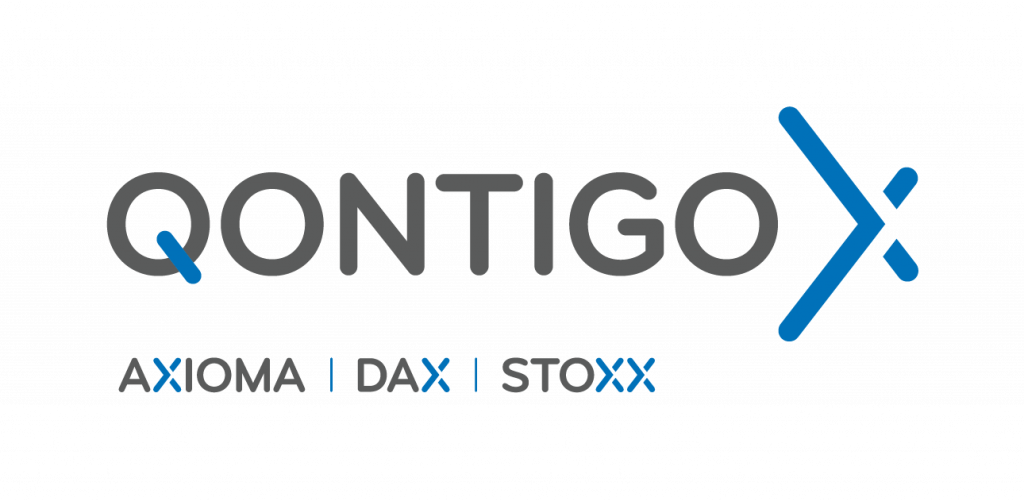
Last year, WTW and Qontigo introduced the STOXX Willis Towers Watson Climate Transition indices (CTIs), which use an innovative and proprietary measure designed by WTW: the Climate Transition Value at Risk (CTVaR). The measure seeks to grasp how companies are susceptible to losses and gains in revenue and asset values as the global economy moves to a net-zero scenario.
We caught up with David Nelson, Senior Director at WTW’s Climate and Resilience Hub, to learn more about the CTIs and how they can help investors look at, and manage, transition risk in a completely different way.

David, the CTVaR measure is forward-looking and can, by definition, be very different from the more traditional carbon footprint criteria. Why and how did your team develop it to gauge climate transition risks?
“A few years ago, we started looking at how sustainability shocks transfer through the financial system as part of an analysis commissioned by a group of former finance ministers within the International Monetary Fund. In 2015, the Taskforce for Climate-Related Financial Disclosures had only just published its recommendations on reporting physical, transition and liability risks, and the potential for climate-related shocks to destabilize the global economy was front-of-mind for the Financial Stability Board following the Global Financial Crisis.
“At that time, policymakers and regulators were focused on accounting for carbon and other greenhouse gas emissions generated in the real economy. Counting molecules of carbon is the essential first step to tackling climate change, but it’s only the start.
Sign up to receive valuable insights, news, and invitations as soon as they are published.
Subscribe >“When we started looking at transition risk, i.e., the impact that changes in policy, regulation, markets and consumer behavior would have on asset values, we found that there were serious shortcomings in using a carbon price to measure risk. Part of the reason why carbon has a low correlation with transition risk is that emissions data are historical. That’s not much use if you’re trying to anticipate how assets should be repriced today based on future climate transition scenarios.
“Furthermore, carbon footprints won’t tell you anything about the financial risks of the business model of a company. For example, a software company that supplies the oil and gas industry is more exposed to losing value under a climate transition than is a software supplier to cleantech industries. Equally, a mining company that provides lithium has a similarly high carbon footprint as does a coal miner, but it is making a greater contribution to the transition that carbon metrics would not capture. Assessing transition risk using carbon emissions could result in the misallocation of capital, starving the companies, industries, and innovations that drive the transition of investment.”
The focus of CTVaR is the risk to each company’s cash flows. How does that work and how is it reflected in the weights allocated to every stock in a portfolio?
“Our analysis begins with the basic principle that the value of an investment is the revenue that it will generate over its lifetime; that is, the net present value of future free cash flows. From that starting point we examine the changes to those cash flows relative to what the market is currently expecting and, therefore, is in today’s price for that security.
“We apply scenarios to each asset or company business line, measuring the impact of these scenarios on the finances, and therefore valuations, of the company. We have adapted and developed scenarios for hundreds of sectors and commodities in the transition. Within individual companies, some business lines might have upside, while others might have downside, from which we derive the total valuation impact. We then feed those impacts into our company, equity and fixed-income valuation models.
“The STOXX Willis Towers Watson Climate Transition indices (CTIs) are underpinned by the CTVaR methodology. They tilt away from companies with high exposure to climate transition risk and that are likely to lose value or underperform as the economy transitions. In practice, the index will hold less of a company with a negative CTVaR than the base index, and overweight where the CTVaR is positive. This is the result of the optimization process to have the portfolio reach a zero CTVaR.
“Additionally, the index excludes companies that derive more than 25% of sales from thermal coal or oil sands extraction, or more than 50% of revenues from power generation.”
While the focus of the CTIs is not on past carbon emissions, the strategy is still aligned with the Paris Agreement’s goals. Can you develop on that?
“Alignment of portfolios with net-zero targets can lead investors to focus too heavily on carbon-based metrics in the short term. Just because a company reports lower carbon emissions, does not mean it is aligned with the transition. And many high carbon emitters may be part of the solution. We use scenarios that are aligned with the Paris agreement’s target. A portfolio with a neutral CTVaR will therefore significantly reduce emissions, with the remaining emissions being those that make the transition happen.
“When you start looking at transition risk through the lens of a financial metric such as CTVaR, it becomes more visible where the risks and opportunities of the transition might exist, and where they are concentrated.
“This high-resolution view of transition risk provides insight for portfolio managers in selecting stocks that will do well in the transition or represent value in the short term if that’s the strategy. But ultimately, the point of CTVaR is to neutralize the transition risk of a portfolio – decarbonization then becomes a side benefit in a way that can be sustained financially, without triggering economic shocks.”
How stable is the CTVaR measure? Does it fluctuate over short time periods?
“While the CTVAR methodology can be applied consistently across all sectors and asset classes, because it looks at cash flows it can also be adjusted in the regular financial reporting cycles. We update the CTVaR datasets on a quarterly basis to account for significant market changes and we do a full, comprehensive update of all 7,000 securities we currently cover on an annual basis.
“CTVaR is a passive, unbiased, representation of climate transition risk in that it incorporates no judgment as to whether a company will, or will be able to, adjust strategy in response to the transition. Instead, CTVaR will only assume that shift once the new strategy is announced and incorporated into market expectations.
“Tesla is a good example of how we have made an adjustment based on market changes. The price of its shares doubled between our original research in May 2021 and the end of 2021. By then, our implied growth model suggested that Tesla’s shares were liable to the equivalent of a 52% CTVaR. This inflated valuation guided us to take Tesla’s upside transition exposure from an original +14% back in June 2021 to +5% by September, and to 0% by the end of that year.”
Your climate risk methodology is now available via STOXX indices. What does that mean in terms of options for the end investor?
“The exposure to climate transition risk will vary by portfolios, but are likely to be meaningful, particularly for those with significant allocations to growth assets, and those that are less diversified. The CTIs can help the end investor manage this risk in a simple, cost-effective way with low tracking error to a market-cap approach.
“As of March 2022, the headline CTVaR for the STOXX® Willis Towers Watson World Climate Transition Index (World CTI)’s benchmark was around -3%, which is significant. This is the result of a 7% downside and a 4% upside. This means that in the event the transition happens in the next year, the CTI would outperform by 3%. The CTVaR is not static and will move around during the transition. Over the long term, we expect the CTI to manage risk and outperform its market-cap benchmark, but this is not guaranteed and there will be periods of over- and underperformance.
“There is no saying how quickly this risk will be priced into markets, but it could happen in the short term, affecting investors with even the shortest of time horizons. Policy and regulation are also having an increasing impact on equity markets and investors are moving prices through their net-zero ambitions. There is now $43 trillion signed up for the Net Zero Asset Managers initiative. But importantly, capital needs to be allocated in the correct way to make the transition happen.”
Why have you chosen Qontigo to collaborate with in this project?
“As they say: if you want to go fast, go alone; if you want to go far, find a partner. Qontigo is taking WTW’s CTVaR methodology and then creating the index, something they are experts in. Qontigo has a strong track record in launching climate indices, but crucially were still looking to expand their ESG and sustainability offerings for clients. The team we worked with clearly understood the benefits of the methodology that goes beyond carbon and how it differentiates in the market. For example, the CTI differs from Qontigo’s Paris-aligned Benchmarks and Climate Transition Benchmarks in both investment objective and approach, taking a more holistic, bottom-up, forward-looking approach to understand how climate transition risk directly impacts company valuations.”

Qontigo is a leading global provider of innovative index, analytics and risk solutions that optimize investment impact. As the shift toward sustainable investing accelerates, Qontigo enables its clients—financial-products issuers, asset owners and asset managers—to deliver sophisticated and targeted solutions at scale to meet the increasingly demanding and unique sustainability goals of investors worldwide.
Qontigo’s solutions are enhanced by both our collaborative, customer-centric culture, which allows us to create tailored solutions for our clients, and our open architecture and modern technology that efficiently integrate with our clients’ processes.
Part of the Deutsche Börse Group, Qontigo was created in 2019 through the combination of Axioma, DAX and STOXX. Headquartered in Eschborn, Germany, Qontigo’s global presence includes offices in New York, London, Zug and Hong Kong.



